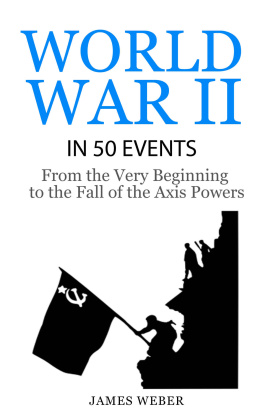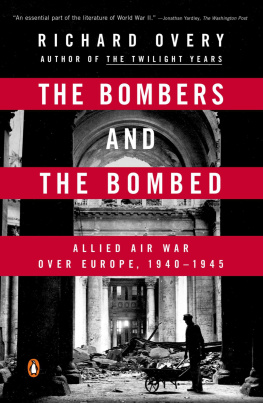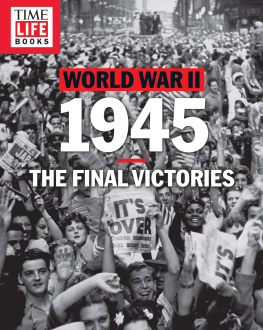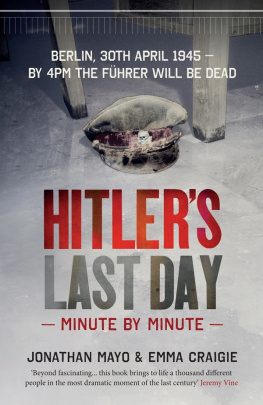The right of John Christopher and Campbell McCutcheon to be identified as the Authors of this work has been asserted in accordance with the Copyrights, Designs and Patents Act 1988.
All rights reserved. No part of this book may be reprinted or reproduced or utilised in any form or by any electronic, mechanical or other means, now known or hereafter invented, including photocopying and recording, or in any information storage or retrieval system, without the permission in writing from the Publishers.
British Library Cataloguing in Publication Data.
A catalogue record for this book is available from the British Library.
Typeset in 11pt on 15pt Sabon.
Typesetting and Origination by Amberley Publishing.
Printed in the UK.
Over 300 men died when the aircraft carrier USS Bunker Hill caught fire after a kamikaze attack in May 1945.
A Brave New World
The economic might of the United States and the numerical superiority of the Soviet Union provided a relentless tide of tanks, ships, aircraft, munitions and men and it was these that would end the war in favour of the Allies. Japan had known in 1941 that she would have to knock out the American fighting capability quickly so that peace could be sued for on Japanese terms. They failed at the first hurdle, and for them the war was one of decline and disaster from 1942 onwards. The German invasion of Russia, Operation Barbarossa, was the beginning of the end of the Axis forces in Europe. The awakening of the Russian Bear saw millions of Germans and their allies die on the Steppes of Russia as they were eventually forced back to the Fatherland itself. Despite the Ardennes offensive, and its slim victories, Germany was all but finished, its reserves used up and on the defensive on all fronts. Japanese forces were being forced back to the mainland of Japan itself. The war would end soon, but the public did not know just how dramatic the final end would be.
On 1 January 1945, the Russians are in Czechoslovakia. The German Army Group Centre, holding the last foreign-based economic and industrial centre in German control, is under attack by 850,000 Soviet soldiers, with around 10,000 artillery pieces, nearly 600 tanks and 1,400 aircraft. The Germans can muster 550,000 men, 5,000 artillery pieces and 700 aircraft. With a numerical superiority of some two to one, the Russians push through the German troops slowly but steadily. Despite early successes in the Ardennes, the Germans have overstretched themselves. They attack the US Seventh Army in Alsace Lorraine, at the Colmar Pocket. The Americans retreat but hold Strasbourg. The Americans lose 15,600 soldiers, with German losses totaling 25,000. In Burma, Chinese units link up but the meet major resistance from the Japanese 56th Division. The war has seen many technological advances and, on 2 January, the Americans use a Sikorsky helicopter on convoy duties for the very first time. On the night of 3/4 January, the American 3rd Fleet attacks Formosa, with 100 Japanese aircraft destroyed. A final attack on Bastogne is made by the Germans on 3 January. The Allies have had time to prepare and now counterattack. The US First attacks the north of the bulge and the US Third attacks the bottom. The Germans begin to withdraw to Houffalize on 8 January but they are forced further east under the American onslaught. The US Third and First meet at Houffalize on 16 January.
In Burma, General William Slims forces land unopposed on Akyab on 4 January, capturing the airfield, as well as the port. In a desperate effort to stop landings at Luzon, Philippines, the Japanese launch suicide attacks on the US 7th Fleet. Around 1,000 Americans and Australians are killed, a minesweeper is sunk and around thirty other vessels are damaged between 46 January. In an effort to stop the American onslaught in the Ardennes, the Luftwaffe launch Operation Bodenplatte, using 1,035 aircraft to attack Allied airfields in Belgium and Holland. Despite destroying 156 aircraft, the Germans lose 277. It is a last-ditch effort and many of the German reserves are thrown at the Allies. They make no further major offensive raids in the war. The Germans attack in Hungary, capturing Esztergom on 7 January. After a heavy bombardment, Luzon is invaded unopposed on 9 January. Knowing that their country will soon be taken by the Soviets, Czech partisans rise up on 10 January, harassing the Germans and attacking supply lines. Poland sees the start of the Vistula-Oder offensive too, with the Russians sending 2 million men into action. East Prussia is attacked on 13 January and tanks have reached Sochaczew on 17 January. In Burma, the Irrawaddy is crossed by the 19th Division on 14 January. They meet stiff resistance but hold their bridgehead.
The Allies counterattack after the Battle of the Bulge, with forays into the Roermond area and up the Roer river valley from 15 to 26 January. The Chinese secure the Burma Road on 16 January, having occupied Namhkan. Between 18 and 27 January, the Germans attack towards Budapest but fail to get closer than 15 miles from the city on 22 January. The Soviets counterattack on the 27th and attempts to reach Budapest have failed. The Japanese are in retreat in Burma, but this does not stop an all-out battle at Namhpakka between 18 January and 3 February. Krakow is liberated on 19 January by the Soviet 1st Ukrainian Front. They have surrounded the German Third and Fourth Panzer Armies, which are now isolated in East Prussia.
The island of Ramree sees the British 71st Brigade land unopposed on 21 January. However, as the British troops head inland, they meet stiffer and stiffer resistance and it takes until mid-February to clear the island, giving the Allies a perfect base for more long-range attacks on Rangoon. On the Vistula river, the Germans are trapped the east bank on 23 January, having had all of the road and rail bridges cut across the river. Brombarg, an important part of the Poznan defensive line, is captured on the same day. The true horror of Nazism is brought home on 27 January when Auschwitz-Birkenau is liberated. The camp has been abandoned since 18 January, with only a few hundred of the weakest captives left after the SS evacuates 20,000 and marches them towards the west. The Burma Road reopens on the same day and it is possible to supply China again. After 100,000 casualties on the German side, and 82,400 American and British casualties, the Battle of the Bulge is finally over, with a massive German defeat. They have also lost around 1,000 aircraft and 800 tanks. While the Allies have lost similar numbers of equipment, theirs can easily be replaced in a month or so. The knocking out of so many weapons and the trained men that operated them is fatal to the Germans. Between 28 January and 1 February, the Americans attack near St Vith, advancing through the German defences, despite opposition. On 29 January, another unopposed landing is made near Bataan, Philippines. On the next day, the Soviets make bridgeheads across the Oder river, having advanced over 350 miles, liberating Poland and much of Czechoslovakia, and are now some 100 miles from Berlin. Over that 355 miles lie 500,000 dead, wounded or captured Germans, along with 1,300 aircraft, 1,400 tanks and around 14,000 artillery weapons. In the Philipines, the Americans land at Nasugbu Bay, around 50 miles from Manila.









